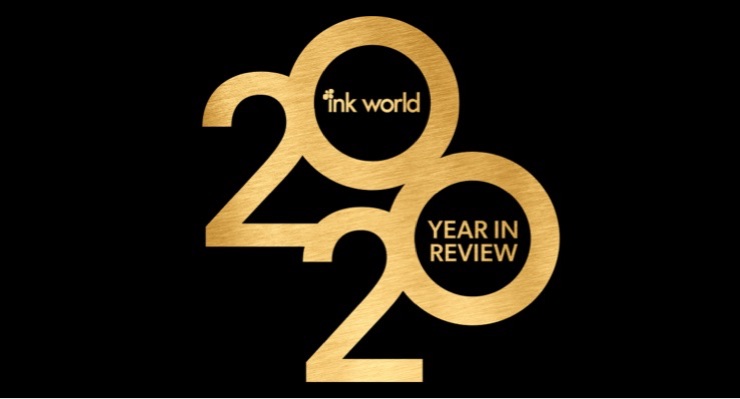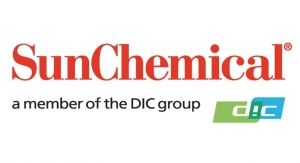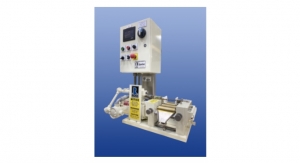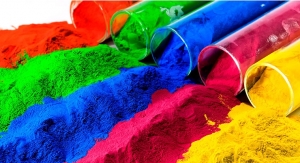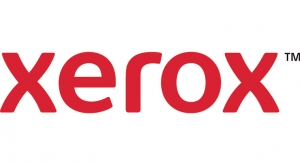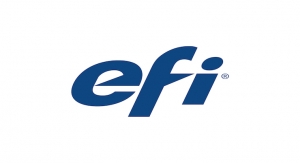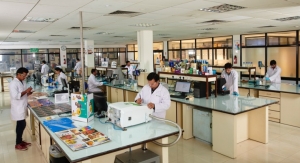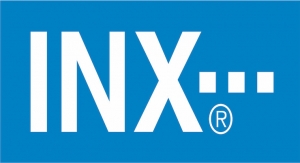David Savastano, Editor11.13.20
2020 has been a year of upheaval throughout the world. The tragic COVID-19 pandemic changed the way people live their lives and do business.
For the ink industry, 2020 saw many changes due to the coronavirus. More people were working from home. Raw material supply was a challenge, and prices increased dramatically.
Shows like American Coatings Show were canceled, and drupa 2020 and Labelexpo Americas were among those that were postponed. Other shows, such as the NAPIM Technical Conference/Electronic and Conductive Ink Conference and PRINTING United, became virtual. Even now, key shows are being moved further back into 2021.
The mergers and acquisitions front was fairly quiet. INX International Ink acquired RUCO Druckfarben in January 2020, and Sun Chemical acquired Sensient Technology’s digital inks business in June 2020. A huge takeover attempt of HP by Xerox, which dominated headlines for a while in January and February, drifted away once the pandemic struck.
Speaking with ink industry leaders, there are a lot of takeaways from the past year. In terms of inks, packaging did well as people stayed home, while commercial and publication printing markets suffered further declines.
Siegwerk CEO Herbert Forker reported that the markets seem to be stabilizing.
“In Europe and the US, flexible packaging and labels have witnessed unusually strong growth in the first half of 2020, primarily driven by overstocking during the initial months of the COVID-19 pandemic,” Forker observed. “At the same time, some of the other regions, such as India, have not fared so well due to stringent lockdowns that brought economies to a complete standstill for several weeks. This resulted in an essential reduction in overall demand at the beginning of the pandemic - an effect that has already started to normalize again.”
“This is a tough year to assess growth or decline in markets,” said Chris Parrilli, president, North American Inks, Sun Chemical. “While the coldset market has declined for years and saw further erosion driven by the pandemic, the heatset and commercial markets saw early negative impact but have started to regain lost business.”
Parrilli said that Sun Chemical has continued to see growth in energy curable products and packaging in 2020.
“The market for UV inks for commercial started slowly but has started to expand in conjunction with the commercial market’s recovery. Also, EC inks in packaging have remained very busy and we see that continuing,” Parrilli observed. “Flexible packaging saw surge demand at the onset of the pandemic, and although that has lessened, the packaging market continues to be strong depending on the sectors. Medical and food packaging have weathered the impact of the pandemic as the market serves as an essential need, so growth has continued. But inks for towel and tissue have declined as CPGs rush to get product in the consumers’ hands and have skipped printing.”
Heiner Klokkers, chairman of the board, MHM Holding GmbH, said that initially, packaging printing has seen growth because of panic buying for FMCG (fast-moving consumer goods).
“At some point, it has reached a certain level, which is stable right now,” Klokkers pointed out. “Packaging for luxury goods has even declined. Business in sheetfed/commercial printing has definitely suffered. We do not expect a rebound either.”
Doug Aldred, president packaging inks for Flint Group, noted that packaging markets have remained fairly resilient throughout 2020, depending on application and region.
“For example, food service has suffered a bit more in some regions than others, of course, the driver being COVID-19,” Aldred added. “Interestingly, the focus around food safety and hygiene during the pandemic has driven the need for flexible packaging. The flexible packaging medium is especially critical for food, beverage and pharmaceutical applications.”
“Demand for sheetfed packaging inks saw an increase during 2020, influenced by panic buying in the supermarkets due to COVID-19, which caused an increase in demand on the food and pharma packaging sectors,” noted Nick Brannan, EMEA business director for Flint Group CPS.
Greg Burch, VP of sales and regional operations for Wikoff Color, reported he saw healthy growth in the packaging industry this year, including folding carton, label and flexible packaging. “While the commercial market took a major hit during the pandemic, as states begin to loosen restrictions we are seeing the beginnings of a rebound in that segment,” Burch added.
“Our packaging business has been on a growth trend for a while now and we expect it to continue,” said John Hrdlick, president and CEO of INX International Ink Co. “This impacts our liquid, metal and energy curable manufacturing locations. We continue to invest in our facilities to ensure we stay abreast of our growth.”
For the ink industry, 2020 saw many changes due to the coronavirus. More people were working from home. Raw material supply was a challenge, and prices increased dramatically.
Shows like American Coatings Show were canceled, and drupa 2020 and Labelexpo Americas were among those that were postponed. Other shows, such as the NAPIM Technical Conference/Electronic and Conductive Ink Conference and PRINTING United, became virtual. Even now, key shows are being moved further back into 2021.
The mergers and acquisitions front was fairly quiet. INX International Ink acquired RUCO Druckfarben in January 2020, and Sun Chemical acquired Sensient Technology’s digital inks business in June 2020. A huge takeover attempt of HP by Xerox, which dominated headlines for a while in January and February, drifted away once the pandemic struck.
Speaking with ink industry leaders, there are a lot of takeaways from the past year. In terms of inks, packaging did well as people stayed home, while commercial and publication printing markets suffered further declines.
Siegwerk CEO Herbert Forker reported that the markets seem to be stabilizing.
“In Europe and the US, flexible packaging and labels have witnessed unusually strong growth in the first half of 2020, primarily driven by overstocking during the initial months of the COVID-19 pandemic,” Forker observed. “At the same time, some of the other regions, such as India, have not fared so well due to stringent lockdowns that brought economies to a complete standstill for several weeks. This resulted in an essential reduction in overall demand at the beginning of the pandemic - an effect that has already started to normalize again.”
“This is a tough year to assess growth or decline in markets,” said Chris Parrilli, president, North American Inks, Sun Chemical. “While the coldset market has declined for years and saw further erosion driven by the pandemic, the heatset and commercial markets saw early negative impact but have started to regain lost business.”
Parrilli said that Sun Chemical has continued to see growth in energy curable products and packaging in 2020.
“The market for UV inks for commercial started slowly but has started to expand in conjunction with the commercial market’s recovery. Also, EC inks in packaging have remained very busy and we see that continuing,” Parrilli observed. “Flexible packaging saw surge demand at the onset of the pandemic, and although that has lessened, the packaging market continues to be strong depending on the sectors. Medical and food packaging have weathered the impact of the pandemic as the market serves as an essential need, so growth has continued. But inks for towel and tissue have declined as CPGs rush to get product in the consumers’ hands and have skipped printing.”
Heiner Klokkers, chairman of the board, MHM Holding GmbH, said that initially, packaging printing has seen growth because of panic buying for FMCG (fast-moving consumer goods).
“At some point, it has reached a certain level, which is stable right now,” Klokkers pointed out. “Packaging for luxury goods has even declined. Business in sheetfed/commercial printing has definitely suffered. We do not expect a rebound either.”
Doug Aldred, president packaging inks for Flint Group, noted that packaging markets have remained fairly resilient throughout 2020, depending on application and region.
“For example, food service has suffered a bit more in some regions than others, of course, the driver being COVID-19,” Aldred added. “Interestingly, the focus around food safety and hygiene during the pandemic has driven the need for flexible packaging. The flexible packaging medium is especially critical for food, beverage and pharmaceutical applications.”
“Demand for sheetfed packaging inks saw an increase during 2020, influenced by panic buying in the supermarkets due to COVID-19, which caused an increase in demand on the food and pharma packaging sectors,” noted Nick Brannan, EMEA business director for Flint Group CPS.
Greg Burch, VP of sales and regional operations for Wikoff Color, reported he saw healthy growth in the packaging industry this year, including folding carton, label and flexible packaging. “While the commercial market took a major hit during the pandemic, as states begin to loosen restrictions we are seeing the beginnings of a rebound in that segment,” Burch added.
“Our packaging business has been on a growth trend for a while now and we expect it to continue,” said John Hrdlick, president and CEO of INX International Ink Co. “This impacts our liquid, metal and energy curable manufacturing locations. We continue to invest in our facilities to ensure we stay abreast of our growth.”
Thoughts Heading into 2021
There is no vaccine yet in sight for COVID-19, and there remains much uncertainty.
“There is still a high level of uncertainty around how the situation with COVID-19 will further develop,” said Forker. “However, we remain optimistic as Siegwerk has managed a high level of stability throughout the previous months. Moreover, we expect that the supply chains, as well as the demand from our customers, will further normalize in 2021, and the development of digital platforms and digitalization tools to streamline processes and simplify collaborations will further gain momentum. Having said that, the health and safety of our employees as well as continued reliable production, which meets the needs of our customers, will remain our primary objectives for now.”
“It is an uncertain time we have to face right now,” Klokkers said. “This won’t change in 2021 even when there is a vaccine for COVID-19. We all have to accept that there is COVID-19 and find a way – in a business and a private context – to live with that virus.”
Parrilli said that we are currently facing unprecedented times.
“In many ways, it has been an unsettling year and much uncertainty is still in the future ahead as we look at 2021, but Sun Chemical is well-positioned to weather the continued storm and our customers should feel some level of comfort knowing that they are working with a company that cares about them, their people, and their success,” he added.
“Heading into 2021, we are optimistic about growth opportunities in multiple packaging segments,” Geoff Peters, president and CEO of Wikoff Color, said. “We expect to see a continued upward trend in energy-cure technologies, from electron beam to UV/LED. Wikoff Color is also investing resources in solutions for sustainable packaging applications, as we anticipate that trend to only increase in 2021.”
Flint Group’s Aldred said that we cannot become complacent in addressing COVID-19 concerns and business processes.
“There remains much uncertainty about the progression of the virus in the coming months; economic uncertainty resulting from the pandemic is likely to affect business planning processes during the next couple of years,” Aldred added. “That said, in 2020, the industry responded in a unified and commendable manner to the pandemic and flexible packaging’s role as a protector, preserver and transporter of food and other essential products was undeniable.”
“I’m looking forward to a year where we can settle back into a somewhat normal routine, whatever that will be,” Hrdlick said. “I see our company having another good year as we evolve our strategy and vision for the future. As difficult and challenging as the world is now, it’s also an exciting time for our business at INX.”
For the entire world, 2020 will always be remembered as the year of the COVID-19 pandemic. For industry, COVID-19 will be a dividing line between pre-pandemic and post-pandemic. Even the way business is being conducted has changed dramatically. Trade shows were canceled or postponed, and traveling to sales meetings has been curtailed. Working from home is becoming more of the norm.
Ink World spoke with many ink industry leaders, who offered their thoughts on how the world of business has changed, and if any of these changes will remain in effect even after a vaccine is available. Here are their insights:
Herbert Forker, CEO, Siegwerk

Herbert Forker, CEO, Siegwerk
Indeed, the COVID-19 pandemic has called long-time established working models into question, challenging all types of businesses worldwide to switch to virtual workflows and create digital workspaces overnight. For years, we at Siegwerk have strategically driven the expansion of our digital offerings to continually enhance the overall customer experience and increase the capability of our internal processes. We were already actively exploring the benefits of digital tools in the workspace and for customer engagement long before COVID-19 turned into a global threat, significantly accelerating discussions and finally becoming a test case for us. That’s why we were able to quickly and successfully offer employees the opportunity to work from home and build on existing digital customer tools such as our Customer Portal and our digital platform for automated ink room management MyInkRoom.
Our goal is and will remain to make expertise quickly accessible and further intensify and improve interaction and cooperation while reducing time-consuming travel. We are planning to further virtualize the customer experience by adding more digital tools such as live streaming events, virtual meetings, digital demonstrations, online training and remote service and support. In the workspace, we expect hybrid working models to gain importance in the long run. Therefore, we are elaborating the advantages of both, working in the office and remotely, to create the most efficient work environment for our employees.
John Hrdlick, president and CEO, INX International Ink Co.

John Hrdlick, president and CEO, INX International Ink Co.
I think it will take some more time for us to get a clearer picture of the new normal. We need an effective vaccine for COVID-19, and in the US, we need to get through the election cycle. Perhaps in six months we’ll be in a better position to answer that question. For now, we have all learned that we can take care of business fairly well by using the technology available to us, and it has become very routine. Business relationships are still very important in all we do and that is one of the negatives we have experienced, especially in regards to international relationships. We still need to be able to have valuable, in-person meetings with our customers and our co-workers globally and here in the US.
The ink industry has benefited in some ways during the COVID-19 pandemic since we are considered an essential business, but it has also been hurt. We’ve seen it at INX. Our packaging business remains very strong, which has benefitted our liquid, energy curable and metal ink divisions. However, the commercial offset and digital divisions are running below expectations as commercial print fell off dramatically during the peak of the pandemic.
We are fortunate to have about 80% of our products on the packaging side of the market. Because our industry is essential and we have been able to continue operations since day one, everyone learned quickly how to work safely and COVID-19 cases have been minimal. I’m very proud of how our employees have cooperated and we never missed a beat. Early on, two of our competitors offered assistance if needed as we dealt with some initial challenges. That’s an example of how great our industry is. We are ready to help each other during difficult times, even though we are competitors.
I think everyone will be more cautious throughout the normal flu season and also with COVID-19 until the situation is settled. Wearing masks when needed, washing our hands properly and more often, being aware of our body temperature and other symptoms are all things that will become more routine. I do think we may see less business travel and more people working from home now that everyone knows our businesses can still run efficiently. Some more than others, but I think there will be a lasting change.
Heiner Klokkers, chairman of the Board, MHM Holding GmbH

Heiner Klokkers, chairman of the Board, MHM Holding GmbH
We do not see a total return to “old” habits. This includes internal workflows and also external ones.
Personal business meetings and trips may experience a little upwind at a certain time again, but current work-life has shown that there are well-working digital channels and possibilities. So there is no urgent need any more for this.
At the same time, the consumer manner has also changed. Printed advertising doesn’t play a significant role anymore. The “digital hype” will remain and extend, for sure.
Chris Parrilli, president, North American Inks, Sun Chemical

Chris Parrilli, president, North American Inks, Sun Chemical
Like most other companies during this time, Sun Chemical has been heavily impacted by COVID-19, not just due to changes in the markets we serve, but also changes in how we serve those markets. I believe that businesses, in general, continue to search for the right way to serve customers, drive value to their customers, and keep their employees safe, productive and engaged. Certainly, there will be a different approach post-pandemic, but to what extent is a guess right now.
We have taken the necessary precautions at all our locations to help prevent the spread of the virus and to ensure the continued health and safety of Sun Chemical employees, our most valuable assets. We have closed our offices and provided the tools and safety guidance to those working remotely. These types of efforts will continue regardless of the situation.
As 2020 comes to a close, we will continue to monitor the changing economic and health landscape to assist us in making the right decisions for our customers and our employees. When a vaccine is released, we will plan to re-evaluate our current processes while keeping safety for all our top priority.
Geoff Peters, president and CEO, Wikoff Color
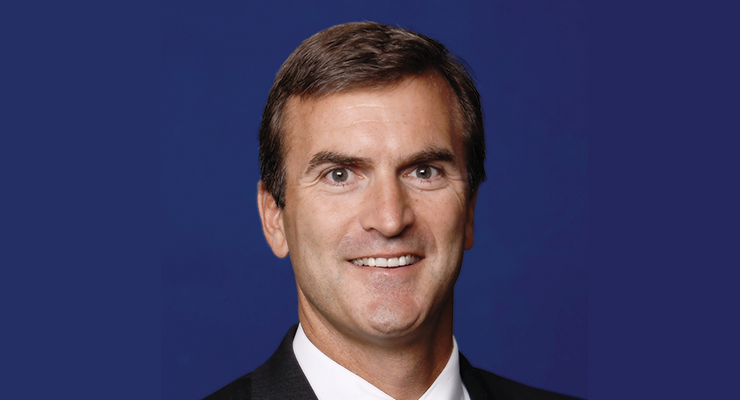
Geoff Peters, president and CEO, Wikoff Color
We all know 2020 posed a lot of challenges, not only to the ink industry but to the entire business world. While the new normal for us will involve many changes to everyday operations – obviously in-person meetings are being replaced by Zoom calls and masks are a necessity – we are proud of the way our company has adapted to these challenging times.
Wikoff Color is looking for ways to apply the changes coming out of 2020 in a positive way for the future. The global supply chain saw strains on materials, manufacturing and logistics, yet our creative problem solving and determination to get things done for our customers helped us avoid any major issues. We may not have the option to meet in large gatherings, but we are working on increasing our outreach and communication channels. Depending on the large-scale availability and public reception of the vaccine, we anticipate many of these changes to remain in effect after its release.
There is no vaccine yet in sight for COVID-19, and there remains much uncertainty.
“There is still a high level of uncertainty around how the situation with COVID-19 will further develop,” said Forker. “However, we remain optimistic as Siegwerk has managed a high level of stability throughout the previous months. Moreover, we expect that the supply chains, as well as the demand from our customers, will further normalize in 2021, and the development of digital platforms and digitalization tools to streamline processes and simplify collaborations will further gain momentum. Having said that, the health and safety of our employees as well as continued reliable production, which meets the needs of our customers, will remain our primary objectives for now.”
“It is an uncertain time we have to face right now,” Klokkers said. “This won’t change in 2021 even when there is a vaccine for COVID-19. We all have to accept that there is COVID-19 and find a way – in a business and a private context – to live with that virus.”
Parrilli said that we are currently facing unprecedented times.
“In many ways, it has been an unsettling year and much uncertainty is still in the future ahead as we look at 2021, but Sun Chemical is well-positioned to weather the continued storm and our customers should feel some level of comfort knowing that they are working with a company that cares about them, their people, and their success,” he added.
“Heading into 2021, we are optimistic about growth opportunities in multiple packaging segments,” Geoff Peters, president and CEO of Wikoff Color, said. “We expect to see a continued upward trend in energy-cure technologies, from electron beam to UV/LED. Wikoff Color is also investing resources in solutions for sustainable packaging applications, as we anticipate that trend to only increase in 2021.”
Flint Group’s Aldred said that we cannot become complacent in addressing COVID-19 concerns and business processes.
“There remains much uncertainty about the progression of the virus in the coming months; economic uncertainty resulting from the pandemic is likely to affect business planning processes during the next couple of years,” Aldred added. “That said, in 2020, the industry responded in a unified and commendable manner to the pandemic and flexible packaging’s role as a protector, preserver and transporter of food and other essential products was undeniable.”
“I’m looking forward to a year where we can settle back into a somewhat normal routine, whatever that will be,” Hrdlick said. “I see our company having another good year as we evolve our strategy and vision for the future. As difficult and challenging as the world is now, it’s also an exciting time for our business at INX.”
For the entire world, 2020 will always be remembered as the year of the COVID-19 pandemic. For industry, COVID-19 will be a dividing line between pre-pandemic and post-pandemic. Even the way business is being conducted has changed dramatically. Trade shows were canceled or postponed, and traveling to sales meetings has been curtailed. Working from home is becoming more of the norm.
Ink World spoke with many ink industry leaders, who offered their thoughts on how the world of business has changed, and if any of these changes will remain in effect even after a vaccine is available. Here are their insights:
Herbert Forker, CEO, Siegwerk

Herbert Forker, CEO, Siegwerk
Indeed, the COVID-19 pandemic has called long-time established working models into question, challenging all types of businesses worldwide to switch to virtual workflows and create digital workspaces overnight. For years, we at Siegwerk have strategically driven the expansion of our digital offerings to continually enhance the overall customer experience and increase the capability of our internal processes. We were already actively exploring the benefits of digital tools in the workspace and for customer engagement long before COVID-19 turned into a global threat, significantly accelerating discussions and finally becoming a test case for us. That’s why we were able to quickly and successfully offer employees the opportunity to work from home and build on existing digital customer tools such as our Customer Portal and our digital platform for automated ink room management MyInkRoom.
Our goal is and will remain to make expertise quickly accessible and further intensify and improve interaction and cooperation while reducing time-consuming travel. We are planning to further virtualize the customer experience by adding more digital tools such as live streaming events, virtual meetings, digital demonstrations, online training and remote service and support. In the workspace, we expect hybrid working models to gain importance in the long run. Therefore, we are elaborating the advantages of both, working in the office and remotely, to create the most efficient work environment for our employees.
John Hrdlick, president and CEO, INX International Ink Co.

John Hrdlick, president and CEO, INX International Ink Co.
I think it will take some more time for us to get a clearer picture of the new normal. We need an effective vaccine for COVID-19, and in the US, we need to get through the election cycle. Perhaps in six months we’ll be in a better position to answer that question. For now, we have all learned that we can take care of business fairly well by using the technology available to us, and it has become very routine. Business relationships are still very important in all we do and that is one of the negatives we have experienced, especially in regards to international relationships. We still need to be able to have valuable, in-person meetings with our customers and our co-workers globally and here in the US.
The ink industry has benefited in some ways during the COVID-19 pandemic since we are considered an essential business, but it has also been hurt. We’ve seen it at INX. Our packaging business remains very strong, which has benefitted our liquid, energy curable and metal ink divisions. However, the commercial offset and digital divisions are running below expectations as commercial print fell off dramatically during the peak of the pandemic.
We are fortunate to have about 80% of our products on the packaging side of the market. Because our industry is essential and we have been able to continue operations since day one, everyone learned quickly how to work safely and COVID-19 cases have been minimal. I’m very proud of how our employees have cooperated and we never missed a beat. Early on, two of our competitors offered assistance if needed as we dealt with some initial challenges. That’s an example of how great our industry is. We are ready to help each other during difficult times, even though we are competitors.
I think everyone will be more cautious throughout the normal flu season and also with COVID-19 until the situation is settled. Wearing masks when needed, washing our hands properly and more often, being aware of our body temperature and other symptoms are all things that will become more routine. I do think we may see less business travel and more people working from home now that everyone knows our businesses can still run efficiently. Some more than others, but I think there will be a lasting change.
Heiner Klokkers, chairman of the Board, MHM Holding GmbH

Heiner Klokkers, chairman of the Board, MHM Holding GmbH
We do not see a total return to “old” habits. This includes internal workflows and also external ones.
Personal business meetings and trips may experience a little upwind at a certain time again, but current work-life has shown that there are well-working digital channels and possibilities. So there is no urgent need any more for this.
At the same time, the consumer manner has also changed. Printed advertising doesn’t play a significant role anymore. The “digital hype” will remain and extend, for sure.
Chris Parrilli, president, North American Inks, Sun Chemical

Chris Parrilli, president, North American Inks, Sun Chemical
Like most other companies during this time, Sun Chemical has been heavily impacted by COVID-19, not just due to changes in the markets we serve, but also changes in how we serve those markets. I believe that businesses, in general, continue to search for the right way to serve customers, drive value to their customers, and keep their employees safe, productive and engaged. Certainly, there will be a different approach post-pandemic, but to what extent is a guess right now.
We have taken the necessary precautions at all our locations to help prevent the spread of the virus and to ensure the continued health and safety of Sun Chemical employees, our most valuable assets. We have closed our offices and provided the tools and safety guidance to those working remotely. These types of efforts will continue regardless of the situation.
As 2020 comes to a close, we will continue to monitor the changing economic and health landscape to assist us in making the right decisions for our customers and our employees. When a vaccine is released, we will plan to re-evaluate our current processes while keeping safety for all our top priority.
Geoff Peters, president and CEO, Wikoff Color

Geoff Peters, president and CEO, Wikoff Color
We all know 2020 posed a lot of challenges, not only to the ink industry but to the entire business world. While the new normal for us will involve many changes to everyday operations – obviously in-person meetings are being replaced by Zoom calls and masks are a necessity – we are proud of the way our company has adapted to these challenging times.
Wikoff Color is looking for ways to apply the changes coming out of 2020 in a positive way for the future. The global supply chain saw strains on materials, manufacturing and logistics, yet our creative problem solving and determination to get things done for our customers helped us avoid any major issues. We may not have the option to meet in large gatherings, but we are working on increasing our outreach and communication channels. Depending on the large-scale availability and public reception of the vaccine, we anticipate many of these changes to remain in effect after its release.

